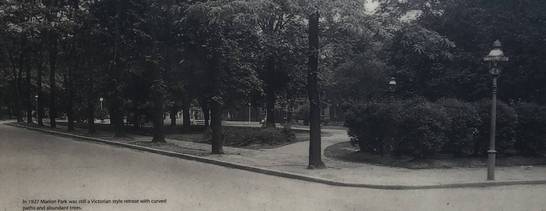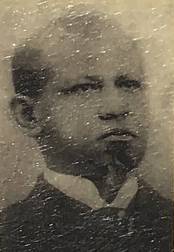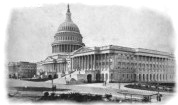Marion Park


|
You are standing across from Marion Park, named for Francis Marion, the celebrated South Carolina state senator (1782-1790) who earned the moniker "Swamp Fox" for his brilliant stealth tactics against the British during the Revolutionary War. Dorothy Owens Hawkins grew up beside the park in 515 E Street, next door to her grandfather William Owens,
a policeman who lived in 513 and was stationed at the Fifth Precinct across the park (no Substation 1-D-1).
He also served at the White House As a child in the 1920s, Dorothy would take a table and chairs to the
park for tea parties under the trees. Ahead of you on the corner is 423 Sixth Street, known as the James Carbery House. Carbery served as a Navy Yard architect and engineer, and as an elected city Common Councilman (1826-1829). He purchased the 1803 Federal style house in 1833 and lived there until his death in 1852. After Carbery's heirs sold the house in 1881, the tower was added and the roofline was altered. Before Carbery purchased the house, it was owned by Robert Alexander, first architect of Christ Church, who lived there and later rented it to his friend and colleague, architect Benjamin Henry Latrobe. |
|
 Calvin T.S. Brent |
The church and parsonage across Sixth Street were designed for Mt. Jezreel Baptist Church in 1883 by Calvin T.S. Brent, the first African American architect to practice in Washington. Built by freed slaves, the church (now Pleasant Lane Baptist Missionary Church) is one of seven Brent designed, of which only three remain. |
Note: The Owens family mentioned is this family from the 1920 US census in Washington DC: Charles R. Owens, 25 (stenographer, hardware store), Clara S. 23, Dorothy J. 4 & 5 months

